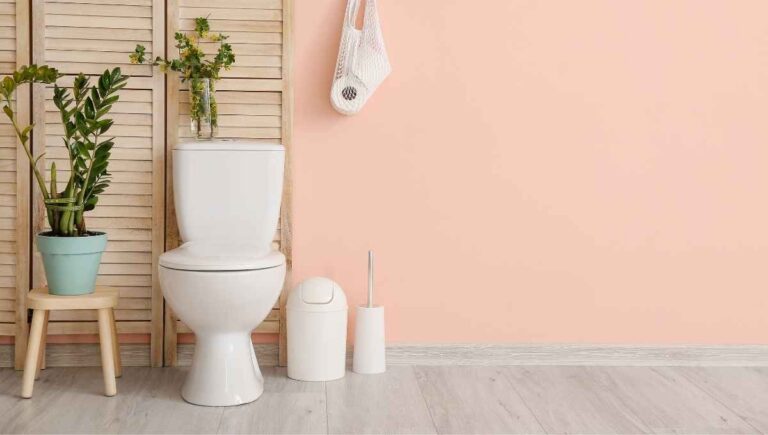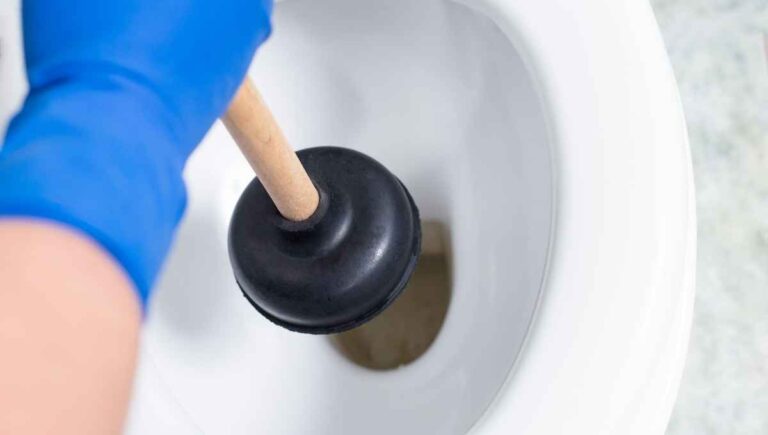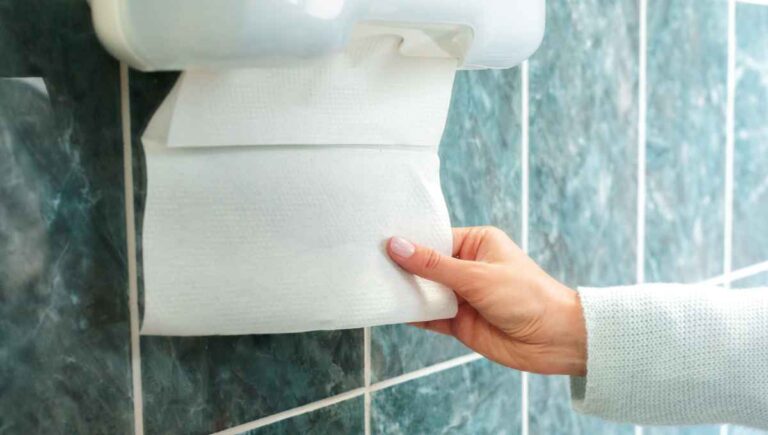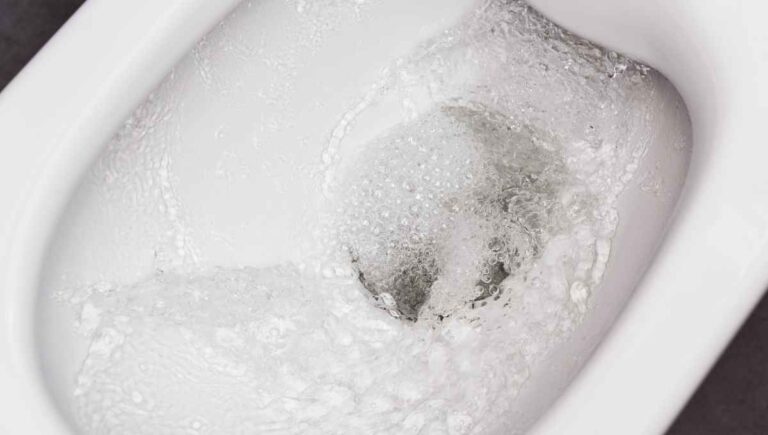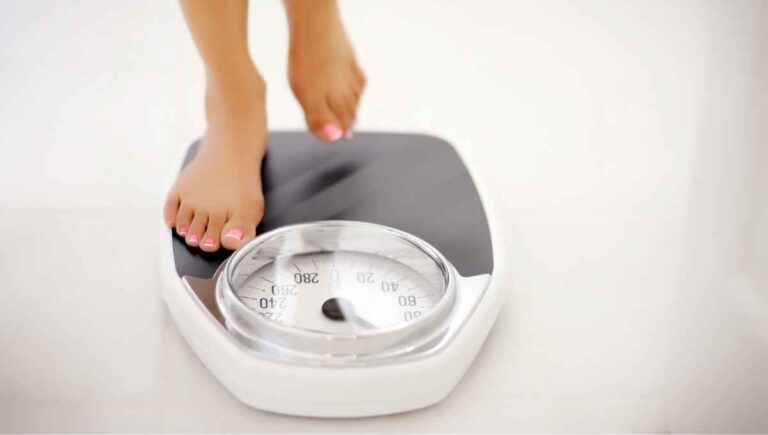Toilet Seat Turned Yellow? (Reasons Why and How to Fix It)
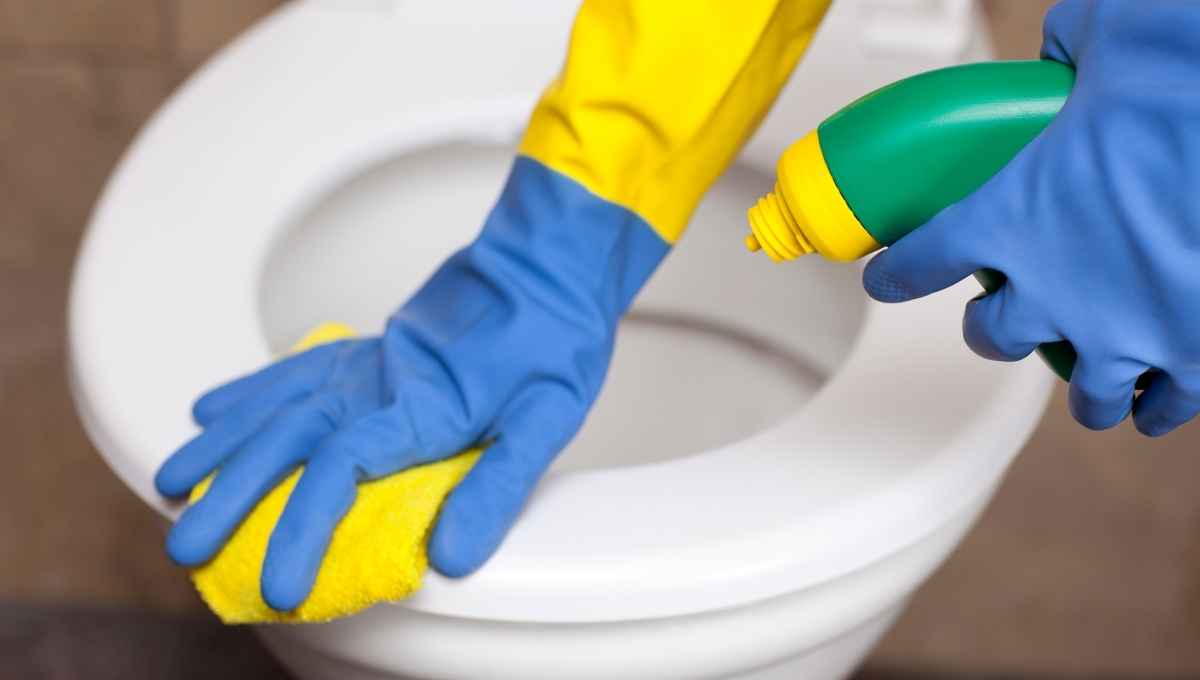
If you’ve ever looked down at your toilet seat and seen that it’s turned yellow, you’re not alone. This is a common problem that many homeowners face, but what causes it and how can you fix it?
Urine and limescale build-up is the most common reason for your toilet seat turning yellow. Over time, If you do not have a regular cleaning schedule, the urine can build up and eventually stain your toilet. Keeping your toilet seat clean will help you avoid these stains.
There are other reasons that could cause yellow stains on your toilet seat, which we dissect in this article. We also discuss how to reverse these stains and make your toilet seat sparkling white again!
This post contains affiliate links. This means Household Blogger may earn a commission should you make a purchase using any of our links. Please refer to our full affiliate disclosure policy for full details.
Here’s a Quick Pro Tip!
Cleaning urination and hard water stains are easy with the right cleaning supplies. Luckily there is a good chance that you already have these natural supplies in your house. So let’s have a look at our top picks.
Our favorite products to clean toilet seat stains naturally and effectively, plus a stain-resistant option for your bathroom:
1. Baking soda – A natural product that dissolves dirt and grease.
2. Distilled vinegar – A natural product that acts as a disinfectant.
3. Toilet seat – Our favorite stain-resistant toilet seat.
Yellow Seat Embarrassment
A yellow toilet seat is something that has probably occurred in your house at least once. It can be somewhat embarrassing, especially if you’re not sure what caused the discoloration.
Let’s discuss what causes yellow stains on your toilet seat so you never have to go through that again!
What Causes Yellow Stains on a Toilet Seat?
Yellow stains on a toilet seat are most likely caused by an irregular or non-existent cleaning routine. If you start seeing yellow stains on your toilet seat, the most common cause is urine build-up.
If you do not clean your toilet seat every time you urinate, or at least once a day, you will quickly see yellow stains.
Urine oxidizes when exposed to air, so if you leave urine on your toilet seat, it will create yellow or orange stains.
Why Is My Toilet Seat Yellow?
The most common reason your toilet seat has turned yellow is due to urine build-up. This is why you should clean your toilet seat every day. Additionally, hard water is another culprit that could cause those yellow stains.
Hard water is not the same as drinking water. Hard water contains minerals, iron, calcium, and magnesium in a much higher dose.
This water is particularly harmful to your pipes and your toilet. It also can cause those yellow stains you may see in your toilet bowl and seat.
You might also enjoy our post on Does Vinegar Damage Toilet Bowls?
Why Has My White Plastic Toilet Seat Gone Yellow?
If your white toilet seat has gone yellow, it is usually one of two reasons; urine or hard water build-up. Urine is the most common reason as most people do not clean the toilet seat after every use.
Small splashes of urine on your toilet seat might go unnoticed. But, over time, these small splashes build up into yellow stains.
Unfortunately, the longer you leave those stains, the darker they will get. The same could be said for hard water. Small drops can splash onto your toilet seat when you flush your toilet.
Because hard water is rich in minerals, when the water evaporates, it leaves behind a mineral deposit, more commonly known as limescale, that also turns yellow over time.
Both of these causes are also damaging to the plastic of your toilet seat and should be cleaned regularly.
You may need a limescale remover for tough stains!
Why Does My Toilet Seat Have Discoloration?
Your toilet seat could have discoloration due to urine, hard water, or even the cleaning chemicals you use. However, urine and hard water are the most common causes of discoloration.
If you use harsh chemicals, it could cause discoloration to your white plastic toilet seat. These harsh chemicals are like undiluted bleach or chlorine bleach.
If you try to use these to clean your toilet seat, you might see discoloration.
Why Is My Pee Staining My Toilet Seat Yellow?
Urine is one of the most common reasons behind yellow stains on your toilet seat. Unfortunately, this is also very common among most households in the US. When urine comes in contact with oxygen, it oxidizes and leaves a yellow stain on your toilet seat.
You can prevent this by keeping a spray bottle filled with undiluted white vinegar and paper towels next to the toilet in your bathroom.
After every use, lightly spray the toilet seat and wipe the vinegar off with a paper towel.
Bleach it out!
Bleach is an extremely harsh chemical. If you use undiluted bleach to clean toilet seats, you will probably damage your seat beyond repair.
In this section, we’ll discuss why bleach can cause yellowing and other ways to clean your toilet.
Why Did My Toilet Seat Turn Yellow After Bleaching?
Bleach is a very harsh and corrosive chemical. For example, if you have a plastic toilet seat and try to clean it with bleach, you might see some yellow stains due to the bleach eating away at the plastic.
It’s also very difficult to clean these bleach stains, so refrain from using them to clean your toilet seat in the first place.
Instead, use white vinegar to clean your toilet seat, as it is a natural product that cleans and disinfects.
How Do You Get Yellow Bleach Stains off the Toilet Seat?
Unfortunately, it’s not possible to completely get rid of bleach stains on your toilet seat, as the bleach burns the actual fibers of the plastic. However, it is possible to lighten these stains.
The best way to lighten the stains is to repaint your toilet seat with an epoxy primer or simply buy a new toilet seat.
You could consider buying a porcelain toilet seat that is not prone to discoloration due to bleach, should you choose that option.
You can also think of using paper toilet seat covers that will protect your toilet seat from urine.
Does Bleach Damage Plastic Toilet Seats?
If you use undiluted or chlorine bleach directly on the toilet seat, it will damage your toilet seat. By nature, bleach burns, so it burns and damages the fibers of your toilet seat.
If you want to use bleach to clean your toilet seat, dilute it with water. Use at least one part bleach to five parts water.
Of course, you could dilute it, even more, to be on the safe side. Also, do not leave the bleach on your plastic seat for more than an hour.
Can You Reverse Yellowing From Bleach?
You cannot reverse yellowing on plastic toilet seats caused by bleach, as the bleach burns the fibers of the plastic seat. Therefore, you can’t scrub it away. However, you can repaint the toilet seat to try and hide the yellow stains.
Repainting a toilet seat is a lengthy process, so we recommend replacing your toilet seat.
Take note of your toilet seat’s shape and size (round or elongated) and pick up a new seat at your local hardware shop.
Why Does Bleach Leave Yellow Stains?
Bleach leaves yellow stains because it is corrosive to plastic and many other materials. You may not see the damage immediately, but over time your plastic objects may develop pale yellow stains from bleach damage.
If you want to use bleach to clean your toilet seat, you should dilute your bleach with water. You want to use more water than bleach to counteract the corrosive qualities of bleach.
Also, do not leave the bleach on your plastic for long periods, as this allows the bleach to soak into the plastic and damage it.
Why Did Bleach Ruin My Toilet Seat?
Bleach may have ruined your toilet seat because it was left on the seat for too long. It could also be because you used undiluted chlorine bleach, which is extremely harsh on plastics and many other materials.
You should not leave your bleach on the plastic for more than one hour, maybe even less. Always make sure to rinse off any bleach residue thoroughly.
Only use bleach diluted with a lot of water.
Yellow Stains Removal
After understanding why your toilet seat has yellow stains, your next thought is probably how you are going to remove them.
Let’s dive into how to remove bleach and urine stains from a toilet seat!
What Removes Yellow Stains From Toilets?
We recommend using baking soda and distilled white vinegar to remove yellow stains from your toilet seat. It’s not a good idea to use bleach to clean your toilet seats, as bleach can cause even more yellow staining.
If you have yellow stains in your toilet bowl, which is usually made of porcelain, then it is acceptable to use a product designed to clean the toilet bowl and includes bleach, like Lysol.
Just make sure you follow all directions for proper use!
How Do You Remove Yellow Stains From the Toilet Seat?
First, you should be sure of the cause of your yellow stain. Bleach stains will likely not be removed, but urine and hard water stains can be. Simply mix a paste of baking soda and white distilled vinegar.
Smear this paste over your toilet seat and leave it to soak for 30 minutes, after which you should wipe off to see a sparkling white seat.
If the stains are faded but still visible, you should repeat the process.
You can also use this method for any bathtub stains!
You might also enjoy our post on How to Get Rid of Orange Ring Stains in Your Toilet Bowl
How Do You Remove Harpic Stains From the Toilet Seat?
If you have Harpic stains on your toilet seat, rubbing alcohol can save the day! It’s well known for its stain-removing abilities. Filling a spray bottle with it and scrubbing it on the blue stains caused by Harpic may solve your problems.
If you don’t have rubbing alcohol on hand, you could reach for the bleach. You have to be careful, though. As we have discussed in this article, bleach can cause yellow stains.
Mix one tablespoon of bleach in two cups of water and only apply to the stain. Leave this solution on for 10 minutes and rinse immediately.
How Do You Remove Urine Stains From a Toilet Seat?
To remove urine stains from your toilet seat, simply mix equal parts distilled vinegar and baking soda to form a paste. It will start to foam. Use an old toothbrush to scrub the foam solution over the urine stains and let it sit for 10 minutes before rinsing.
Urine stains on a toilet seat can cause your whole bathroom to look dirty and unkempt.
Luckily, it is rather easy to remove urine stains from your toilet seat, and you probably already have white distilled vinegar and baking soda on hand.
How Do You Restore a Toilet Seat?
If you feel like there is still some life left in your toilet seat, you could repaint it to make it look brand new. Toilet seats are used multiple times a day, so they are prone to have a lot of wear and tear.
How to repaint a toilet seat:
- Remove the toilet seat from the toilet and take it outside.
- Clean your toilet seat with a disinfectant, like vinegar.
- Use 120-grit sandpaper for sanding all the areas you want to paint lightly.
- Spray paint the toilet seat by holding the can 10 inches away from the plastic, and spray an even coat.
- Let it dry completely and reinstall it on your toilet.
How to You Remove Yellow Bleach Stains From Plastic?
Yellow bleach stains on your toilet seat are permanent and cannot be removed. However, you can repaint your toilet seat to restore a white color or replace your toilet seat with a new one.
You might be able to lighten the stains if you pour a baking soda and vinegar mixture over the bleach stains.
Letting this mixture sit for 30 mins and soak into the stain might lighten it, but unfortunately, it will not fully remove the stains.
You might also enjoy our post on How to Get My Bathtub White Again
How Do I Get My Toilet Seat White Again?
Most toilet seat stains are due to urine or hard water. Luckily you can remove both of these stains by mixing one part distilled white vinegar and one part baking soda and scrubbing the stains with this mixture.
However, if your toilet seat has stains from bleaching, you will not be able to remove these stains.
Instead, you can try to use the baking soda and vinegar mixture to lighten the stains at least. Leave the mixture on the stain for 30 minutes and then scrub it off.
How Do You Whiten a Stained Toilet Seat?
Contrary to what many think, you should not use undiluted chlorine bleach to whiten your toilet seat. This chemical is too harsh and will damage your plastic toilet seat. Instead, if you want to use bleach, you should dilute it with water.
You should dilute one tablespoon of bleach with two cups of water to ensure that the bleach will not damage your toilet seat.
Also, do not leave the bleach on the stains for a long period, never longer than one hour.
Related Questions
Do They Make Non-yellowing Toilet Seats?
There are stain-resistant toilet seats. Most are made of polypropylene, which is a type of flexible plastic that bends instead of cracking or breaking. This material is known to be stain resistant.
The Bath Royale BR606 is the most premium non-yellowing toilet seat.
The material it is made of is called polypropylene, which is stain-resistant. It’s also slow-closing, so it won’t slam down accidentally and damage your toilet bowl.
Why Did My Bleached Toilet Seat Turn Pink?
There is a specific bacteria called Serratia Marcescens that causes pink stains in your toilet bowl and all over your bathroom. Luckily it is easy to remove with a bleach-based toilet cleaner, like Lysol.
However, if your toilet bowl develops pink stains after you bleach, this could be bleach damage.
This is because bleach damages all plastics, especially plastic toilet seats, and these stains can’t be removed.
Does Leaving Pee in the Toilet Stain It?
Although it might be better for water conservation, leaving urine in your toilet will stain it and also leave an unpleasant odor in your bathroom. We recommend flushing your toilet after every use.
Hard water also makes these stains more visible and develop quicker. Hard water has a high mineral content and also forms limescale in your toilet.
To prevent these stains from forming, flush your toilet!
Final Thoughts
Now you understand exactly what causes these yellow stains and how to clean them using natural products!
We don’t recommend using chlorine bleach or any undiluted bleach to clean your plastic toilet seat.
Hopefully, now you know all you need to be able to keep your bathroom fresh and yellow-free!





